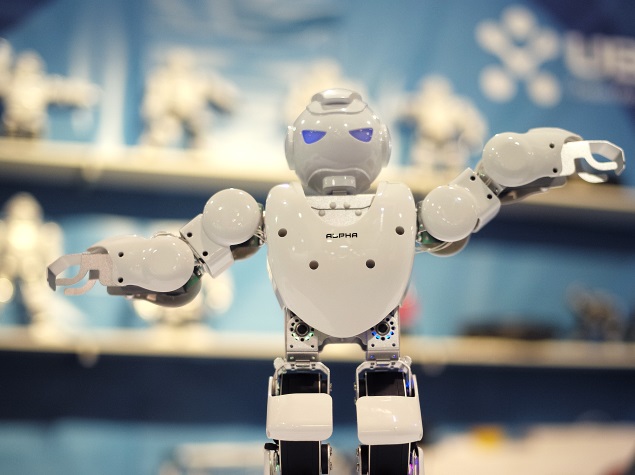- Home
- Science
- Science News
- New Vision System to Help Robots See Better
New Vision System to Help Robots See Better

The new algorithm is accurate and 10 times faster, making it much more practical for real-time deployment with household robots.
For household robots to be practical, they need to be able to recognise the objects they are supposed to manipulate.
But while object recognition is one of the most widely studied topics in artificial intelligence, even the best object detectors still fail much of the time.
"If you just took the output of looking at it from one viewpoint, there is a lot of stuff that might be missing or it might be the angle of illumination or something blocking the object that causes a systematic error in the detector," said lead author Lawson Wong, graduate student in electrical engineering and computer science and lead author at MIT's computer science and artificial intelligence laboratory.
Wong and his team considered scenarios in which they had 20 to 30 different images of household objects clustered together on a table.
In several of the scenarios, the clusters included multiple instances of the same object, closely packed together, which makes the task of matching different perspectives more difficult.
The researchers show that a system using an off-the-shelf algorithm to aggregate different perspectives can recognise four times as many objects as one that uses a single perspective.
The paper is forthcoming in the International Journal of Robotics Research.
Catch the latest from the Consumer Electronics Show on Gadgets 360, at our CES 2026 hub.
Related Stories
- Samsung Galaxy Unpacked 2025
- ChatGPT
- Redmi Note 14 Pro+
- iPhone 16
- Apple Vision Pro
- Oneplus 12
- OnePlus Nord CE 3 Lite 5G
- iPhone 13
- Xiaomi 14 Pro
- Oppo Find N3
- Tecno Spark Go (2023)
- Realme V30
- Best Phones Under 25000
- Samsung Galaxy S24 Series
- Cryptocurrency
- iQoo 12
- Samsung Galaxy S24 Ultra
- Giottus
- Samsung Galaxy Z Flip 5
- Apple 'Scary Fast'
- Housefull 5
- GoPro Hero 12 Black Review
- Invincible Season 2
- JioGlass
- HD Ready TV
- Laptop Under 50000
- Smartwatch Under 10000
- Latest Mobile Phones
- Compare Phones
- OPPO Reno 15 Pro Max
- Honor Win RT
- Honor Win
- Xiaomi 17 Ultra Leica Edition
- Xiaomi 17 Ultra
- Huawei Nova 15
- Huawei Nova 15 Pro
- Huawei Nova 15 Ultra
- Asus ProArt P16
- MacBook Pro 14-inch (M5, 2025)
- OPPO Pad Air 5
- Huawei MatePad 11.5 (2026)
- Xiaomi Watch 5
- Huawei Watch 10th Anniversary Edition
- Acerpure Nitro Z Series 100-inch QLED TV
- Samsung 43 Inch LED Ultra HD (4K) Smart TV (UA43UE81AFULXL)
- Asus ROG Ally
- Nintendo Switch Lite
- Haier 1.6 Ton 5 Star Inverter Split AC (HSU19G-MZAID5BN-INV)
- Haier 1.6 Ton 5 Star Inverter Split AC (HSU19G-MZAIM5BN-INV)
















